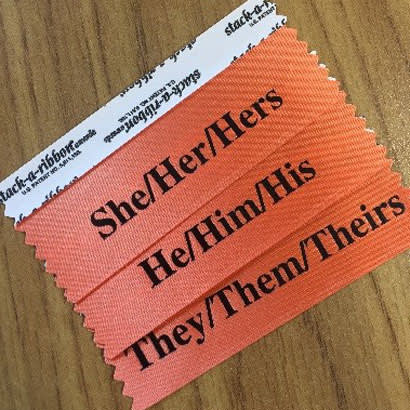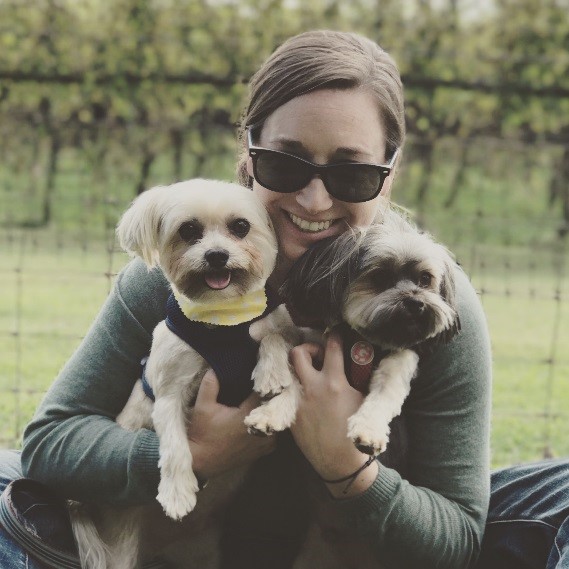
Hey folks, allow me to introduce myself. My name is Allison. I’m a Senior Program Manager at NRPA working on our health and wellness initiatives. I love dogs, being outdoors, eating and drinking local, the occasional run when it’s not brutally hot out, and spending time with my family and friends. Oh, and, my personal gender pronouns are she, her and hers.
You might be asking yourself, “what is a ‘personal gender pronoun?’” Good news, you’re not alone! Although gender pronouns are commonly used in many communities and organizations, many people are not familiar with what they are or how they are used. Let’s start with personal pronouns.
What is a personal pronoun? Personal pronouns have been around forever, and you’ve probably been using them for most of your life. A personal pronoun is a word that refers to either the people talking (I or you) or someone or something that is being talked about (she, it, them and this). For example, “I” am a park and rec kid. Or, “she” is a park and rec kid.
That brings us to personal gender pronouns. A personal gender pronoun is the pronoun that a person uses for themselves. A gender pronoun reflects who a person is, how they identify and how they would like to be referred to by others. It’s important to note that you can’t always know someone’s pronoun just by looking at them, and you should never assume what their pronoun is. Correctly using someone’s personal gender pronoun shows respect for their gender identity. Some of the more commonly used gender pronouns are “she/her/hers,” “he/him/his” or “they/them/theirs.” In fact, there are dozens and dozens of gender pronouns that exist, including gender neutral and gender inclusive pronouns like “zie,” “sie” and “ey.” And of course, there is always the option for a person to prefer not to use pronouns at all — they may simply want to go by their name. The easiest way to ensure that you’re using a person’s correct pronoun is by letting them tell you, or even asking!
The use of gender pronouns is becoming more widely used across all sectors, including at schools, universities, businesses, community programs, and yes, even in parks and recreation! While it may be unfamiliar, it’s an important practice in promoting inclusion for those who identify as LGBTQ+. As public entities and community-based providers, local park and recreation agencies serve people from all races, ages, orientations and identities. To that note, we should ensure that all people not only have access to park and recreation places, spaces and programs, but that all people feel welcome and included.
A wonderful way to promote LGBTQ+ inclusion is by normalizing the use of gender pronouns through your work, communications and interactions. That’s why, for the first time, NRPA is providing gender pronoun ribbons at our annual conference! This year, all attendees will have the option of sporting their personal gender pronoun on their conference badge. You can pick up a pronoun ribbon near the registration area. We’ll be providing the following options:
- She/Her/Hers
- He/Him/His
- They/Them/Theirs
- Fill in your pronoun (blank ribbons provided to write your personal gender pronoun)
As we pack our bags for #NRPAConference in Indy and work to promote inclusion in our agencies year-round, here are some other tips to consider when using gender pronouns:
- Normalize: Use pronouns across your organization by adding your personal gender pronoun to email signatures and bios—this reinforces that people shouldn’t assume someone’s pronoun based on the traditional gendering of a name.
- Ask: Ask everyone their pronouns, not just those that may be trans or non-binary.
- Practice: Using gender pronouns frequently can help make it part of your normal day-to-day interactions. If you’re thinking of making an organization-wide change, consider using pronouns during introductions to meetings, trainings, and during ice-breaker activities.
- Apologize: Mistakes happen. If you make a mistake when using gender pronouns, simply apologize and correct yourself.
- One size doesn’t fit all: There are dozens of pronouns and terms people use to describe themselves. The best piece of advice, is to simply call people what they want to be called.
- Use non-binary greetings: Instead of saying “Hey ladies” or “How’s it going, guys?” try to use gender neutral language like “folks,” “friends,” or “y’all.”
Check out NRPA’s new Parks for Inclusion video and one-pagers for other ways to be more inclusive to the LGBTQ+ community, as well as New Americans, those with disabilities and people of color.
Allison Colman is a Senior Program Manager at NRPA.


